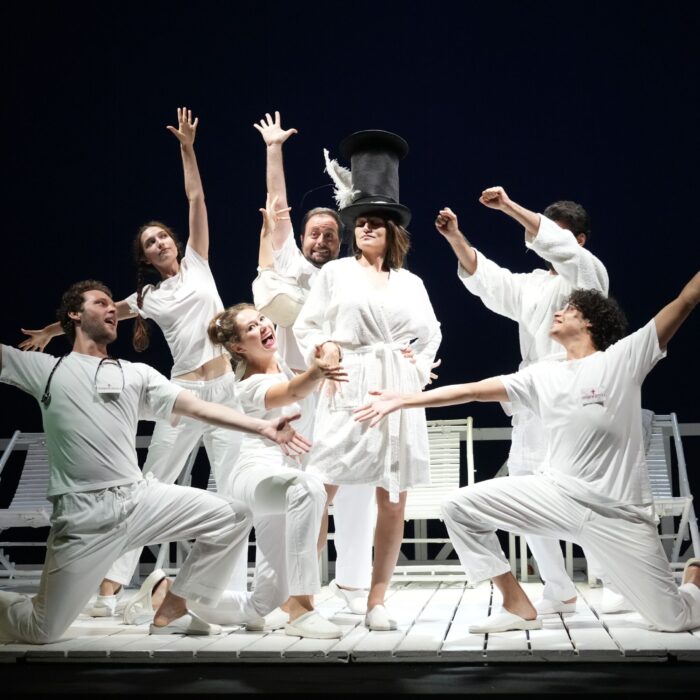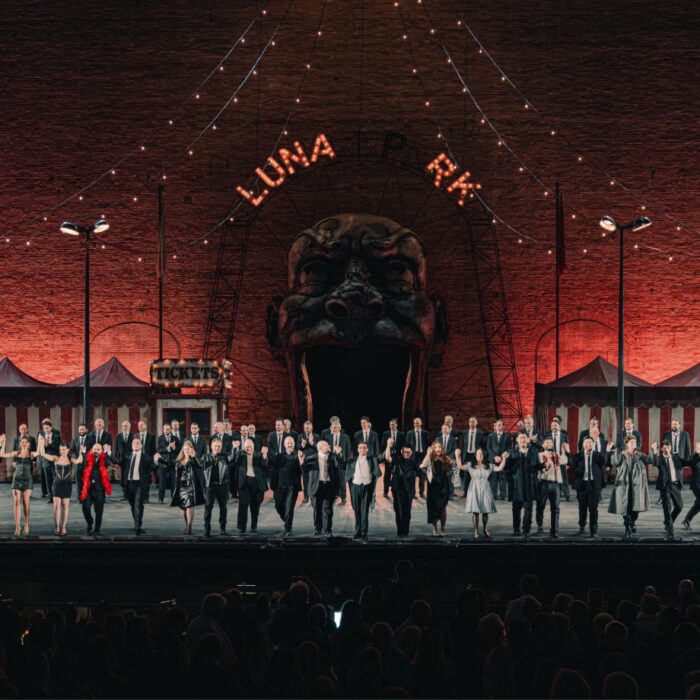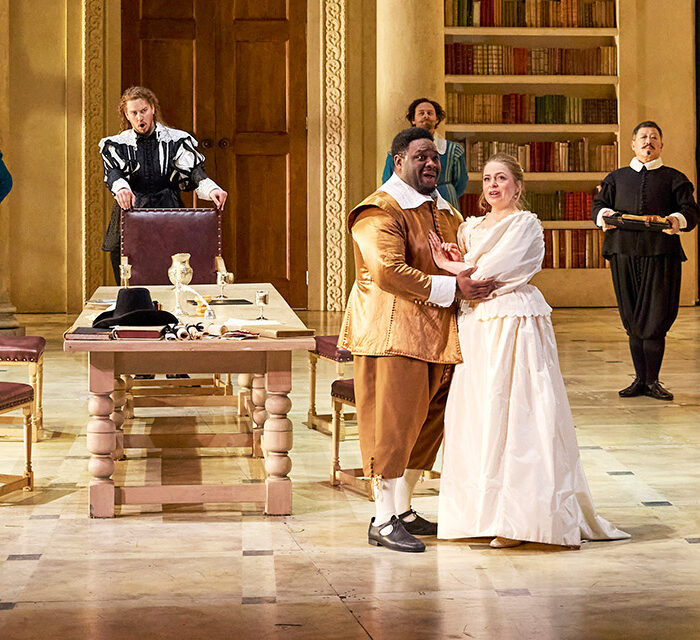
Baltic Opera Festival 2025 Review: The Monster’s Voice
Premiere of a New One Act Opera Continues This Year’s Theme of a Wanderer Confronting His Own Loneliness, Exclusion and Humanity
By Zenaida des Aubris(Photo: KARPATI & ZAREWICZ)
Continuing the theme of this year’s Baltic Opera Festival of a wanderer confronting his own loneliness, exclusion and humanity, the one act opera “The Monster’s Voice” is based on the real-life story of a young Jewish boy, Salomon Perel, who, because of his “Arian” looks, hid in the ranks of the Hitler Youth Movement during World War II and thus managed to survive. Further inspiration was given by the film “Europa Europa” (1990) by director Agnieszka Holland, known in German as “Hitlerjunge Salomon.” Also based on Perel’s life. Stage director Agnieszka Smoczyńska and her librettist Robert Bolesto couple this story to a museum exhibit about the Greek myth of the fate of Medusa, the snake haired woman who was once raped by Poseidon for her beauty and had to pay for it by being disfigured into a monster by the jealous Pallas Athena. Medea’s son is now supposed to curate an exhibition about his mother in a museum, where no one is allowed to learn of his origins. The parallel being that he, too, hides in a foreign environment to save his life. However, the opera has strayed so far from the plot about a Jewish teenager who manages to survive among hardcore Nazis with a mixture of peasant cunning and improbable luck that it is now unrecognizable.
It’s a shame that the plot is so cerebral and detached, because composer Alek Nowak‘s music has the potential to appeal to a wide audience. Piercing strings are countered by rapid, warm-sounding upward and downward movements of the wind instruments, and a hammering march rhythm meets suspense. Describing more of an inner state than a dramatic plot, this quasi-one-person piece (with choir) powerfully shifts between thriller and dream. Countertenor Jan Jakub Monowid masters his part with extraordinary versatility, and the orchestra of the Gdańsk Opera House under Yaroslav Shemet underscores the high musical standard that can be currently found in all of Poland. The Designer of visual projections, Natan Berkowicz, produces most disturbing images, with subjective camera technique following a group of youngsters in the Hitler youth uniform on a walk through a forest, implying that they indulge in acts of what looks like cannibalism, with their faces and hands smeared with blood. Even though the viewer knows that this is all make-believe, one cannot but wonder what sort of a lasting psychological impression this will leave on the youngesters who took part in the filming of these sequences, assuming that the filming was done with real people and not AI generated.
The scenography of Jagna Dobesz is functional and minimalistic, showing the museum with a central platform, which serves as an anchor for the action taking place on and around it. Katarzyna Lewińska makes costumes that are banal, every day looks that make it all the more believable. Choreographer Tomasz Jan Wygoda creates a series of contortions and flows of movement that mirror Nowak’s discordant music.

(Photo: KARPATI & ZAREWICZ)
Perhaps it is best to let the creators of this work have their say to explain the contorted concept:
“The production depicts the creation process of a contemporary art exhibition entitled ‘The Extermination of the Medusas.’ The protagonist is the Curator, for whom the exhibits and accompanying events become a vehicle back to ancient times. The Curator identifies with Medusa and undertakes an inner journey through a tragic history. He experiences the cost of renouncing one’s own identity – a price Medusa pays to survive. He asks himself what meaning an exhibition holds in times when the slogan ‘Never Again’ has lost its protective power, and cruelty toward strangers – the ‘new monsters,'” explains playwright and librettist Robert Bolesto.
“’The Monster’s Voice’ is about a person who, under the threat of death, can never reveal the truth about themselves. They must hide or disguise themselves. Pretend to be someone else. Constantly observe everything and everyone, trust no one. Eventually, at the cost of their life, they become ‘nobody.’ The truth about the titular character is revealed primarily through their voice – high and pure. For most of the time, it must remain suppressed, avoiding natural, upper registers. Only a few times, at moments of particular significance, does it resound fully. The harmony leans toward twelve-tone technique. The orchestration and instrumentation reflect a modernist retreat from Wagnerian monumentalism toward chamber music,” says composer Alek Nowak.
“We transpose a modern story into the world of myth to reach the roots of fear, hatred, and love, seeking in them timeless truths about humanity. We aim to confront operatic form with realism. The staging refers to a documentary-style account of the creation of a museum exhibition about the extermination of the ‘other,’ the ‘alien,’ the ‘unknown’ – by transforming them into a monster and then executing them. The emerging exhibits summon the ghosts of the past, which in turn trigger deeply encoded fears in the main character. The depicted reality slowly begins to warp – revealing primal images inscribed in the world’s history. We come to understand that the libretto’s core is the motif of annihilation and the loss of identity – relevant from the dawn of humanity to today humanity,” explains the opera’s director, Agnieszka Smoczyńska.
This work is a co-production between the Baltic Opera in Gdańsk, Malta Festival, Kulczyk Foundation, and the Polish National Centre for Culture, co-financed by the Minister of Culture and National Heritage as part of the cultural programme of the Polish Presidency of the Council of the European Union 2025.



